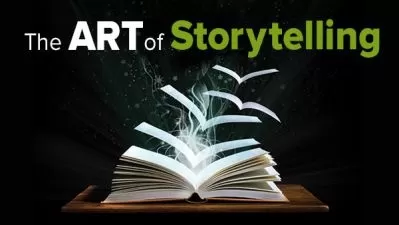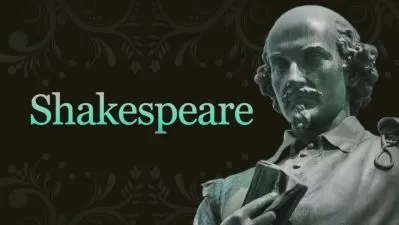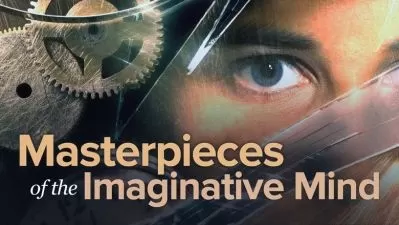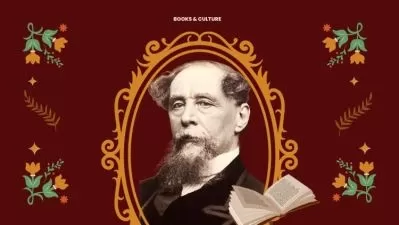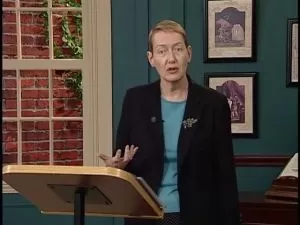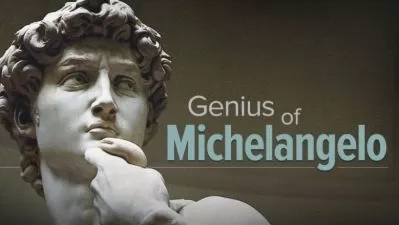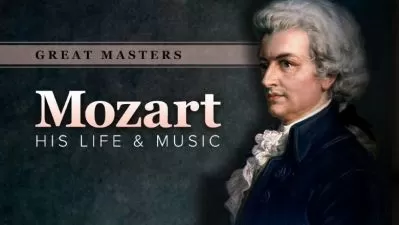Norse Mythology
Jackson Crawford
11:22:35
Description
The figures of Norse mythology are everywhere. They swing hammers in multi-million-dollar film franchises. They ride to blaring trumpets at opera houses around the world. But, as you will discover, the stories and characters made so popular today don’t hold a candle to the source material. Get to know the real histories of the comic book, cartoon, and film stories you think you know.
Thor, Odin, Loki, Freyja, the Valkyries, Valhalla, Ragnarok. These names are familiar to us, yet much of what we encounter about Norse mythology in daily life and pop culture are connected to their medieval sources in name only. And while the reinterpretation and reimagination of old stories is a legitimate narrative tradition, we do both the past and the present a disservice when we allow these reinterpretations to displace the true Viking-age myths. These stories—preserved through orally transmitted poems from more than 1,000 years ago in pre-Christian Scandinavia—were not written down and collected until much later, in the 13th century in Iceland. Since then, they have transformed again and again as each new generation has encountered them.
These original tales, which included stories of the first humans made from pieces of driftwood, of a world-encircling serpent, of gods who are both incredibly powerful and incredibly fallible, of magic runes and weaponry, of battle-hardened warriors and shape-shifting tricksters, are more eye-opening than anything portrayed in pop culture. And they reveal a fascinating window into a time and civilization that is both starkly different from our own, and in some ways, surprisingly similar.
Join Jackson Crawford—long-time university instructor, public educator, Old Norse scholar, and popular YouTube host—for a rousing introduction to the original stories, characters, and themes of Norse mythology. Packed with gods, anti-gods, magical figures, human heroes, religious practices, and thrilling adventures, the 24 lectures of Norse Mythology lay bare the reasons for our enduring fascination with these undeniably dramatic tales. They also connect the dots to Icelandic sagas of human heroes and to the culture and worldview of the Scandinavian peoples. With his expertise, Dr. Crawford will help you engage more deeply with these sources and leave you with plenty to remember in the eerie tales and timeless wisdom of the Norse gods and heroes.
One Epic Family Squabble
So, where do these myths come from?
In AD 1000, Iceland was converted to Christianity—a conversion that, unlike in Norway, happened peacefully. Such a peaceful transition to a new religion in a place far from the rest of Europe allowed medieval Icelanders to continue passing on the oral poetry of their pagan forebears without the anxiety and suspicion pagan traditions encountered elsewhere. Yet the religion they now practiced was Christianity, so no instructions for the worship of the old gods were passed down. Only the stories.
Dr. Crawford roots Norse Mythology in two main sources:
- Prose Edda: Icelandic historian Snorri Sturluson’s work remains the most approachable written source for Norse myth, from the world’s beginning to its destruction at Ragnarok.
- Poetic Edda: This anonymous work compiles some 30 poetic tales that once circulated in oral transmission, many of which Snorri quotes and explains in his Prose Edda.
A Pantheon Like No Other
The Norse myths are largely the account of the fierce (and sometimes comedic) rivalry between two great sides of a family of powerful supernatural beings, fighting from the beginning of time to its end. On one side: the gods, who, being more favorable in their conduct toward human beings, were the only side of the family the Norse worshipped. On the other side: the “anti-gods,” who had a similar power and close relationship, but an incredibly hostile disposition.
Norse Mythology is your chance to spend time in the company of an incredible pantheon of characters, many of whom differ in remarkable ways from their pop-culture counterparts.
- Thor: The iconic god of thunder? Not necessarily. In our written sources in Old Norse, Thor is associated with thunder only once—during his duel against his stone-headed enemy, Hrungnir. Otherwise, Thor is never actually associated with thunder.
- Loki: A trickster god whose Old Norse stories vary in tone. In one story, for example, you’ll hear how he fathers fearsome children who will murder the gods. In another, you’ll see him as the punchline in a story where one of his children (a horse) ends up being useful to the gods.
- Balder: Odin’s son, whose name relates to the ancient word for brightness, was so beloved that Snorri tells us a bright flower is known as “Balder’s eyelash.” You’ll see his shocking death, a principal story from the Eddas, as an omen of darker things to come.
- Freyja: It appears likely the goddess Freyja was the commander of the Valkyries, who had the ability to travel between the realm of the living on Midgard and that of dead warriors in Valhalla. (And Dr. Crawford notes that, unlike in common pop-culture portrayals, “Valkyrie” was a job and not a supernatural being—albeit one with special perks.)
And that’s just the beginning of the supernatural beings you’ll encounter in these lectures. They also include:
- Shieldmaidens: Unconventional women who led the life of a warrior or raider;
- Berserkers: Men blessed by Odin with a violent, wild trance that enables them to outfight their enemies while making them social pariahs; and
- The Norns: Three shadowy female beings who determine, at the birth of every sentient being, what day that person will die.
Incredible Stories, Incredibly Told
Dr. Crawford teaches you how to approach Norse mythology on its own terms, not as you would a novel or movie from our own day. Like dreams, the actions taken by the gods, heroes, and villains in these stories often feel constrained by limits we can’t see, understand, or even reason. While there may be consistent characters in many individual myths, there can be minor differences in plot or story details.
So, trust in the fluidity of the myths, and enjoy spirited retellings of stories in which:
- Thor loses his great hammer (sometimes through trickery, other times by having it taken from right under his nose);
- The first members of humankind are molded by the gods from two pieces of driftwood found by the shore of the ocean;
- Odin travels to Hel to dig up a dead witch and interrogate her about what his son’s premonitions of his own death mean;
- Multiple generations of a marshy district in Iceland must deal with the ravages of an “again-walker” (akin to a zombie); and
- The dwarven smith Regin teaches the great Volsung hero Sigurth skills in sword-fighting, archery, languages, and even board games.
But these stories are more than just entertainment. They offer perspectives into beliefs, customs, and practices that defined the people that told them, including a code of reckless courage and an emphasis on honoring oaths in the most literal fashion possible.
An expert in Old Norse language and literature, Dr. Crawford has written his own translations of the primary sources of Norse mythology. And as a long-time university educator and full-time public educator on these incredible stories, he makes every lecture of Norse Mythology feel like a thrilling ride into the past, and into all the various realms these characters inhabited.
More details
User Reviews
Rating
Jackson Crawford
Instructor's CoursesJackson Crawford is a Resident Scholar at the University of Colorado Boulder’s Center of the American West. After more than a decade as an instructor in Norse mythology and Old Norse language and literature at such institutions as the University of Colorado Boulder; the University of California, Berkeley; and the University of California, Los Angeles, he became a full-time public educator and translator for all things Old Norse in 2020. He received his MA in Linguistics from the University of Georgia and his PhD in Scandinavian Studies, focusing on Old Norse language and literature, from the University of Wisconsin–Madison.
Among other accomplishments, Jackson has built up a large YouTube following and has served as an Old Norse language and runes consultant on major multimedia projects, including some of today’s most popular films and video games. His translations of the primary sources of Norse mythology include The Poetic Edda: Stories of the Norse Gods and Heroes; “The Saga of the Volsungs” with “The Saga of Ragnar Lothbrok”; The Wanderer’s “Hávamál”; and Two Sagas of Mythical Heroes: “Hervor and Heidrek” & “Hrólf Kraki and His Champions.”

The Great Courses
View courses The Great Courses- language english
- Training sessions 25
- duration 11:22:35
- English subtitles has
- Release Date 2023/08/19












